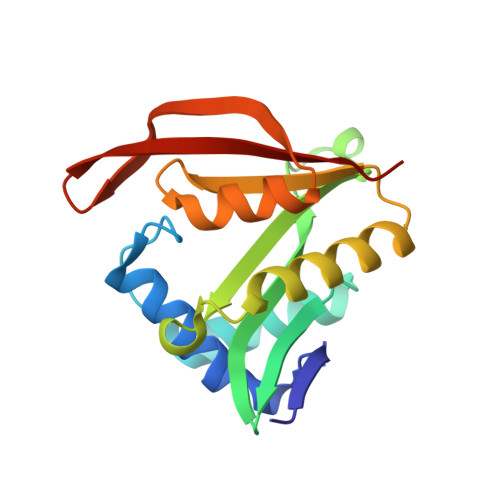Structural characterization of a Gcn5-related N-acetyltransferase from Staphylococcus aureus.
Srivastava, P., Khandokar, Y.B., Swarbrick, C.M., Roman, N., Himiari, Z., Sarker, S., Raidal, S.R., Forwood, J.K.(2014) PLoS One 9: e102348-e102348
- PubMed: 25118709
- DOI: https://doi.org/10.1371/journal.pone.0102348
- Primary Citation of Related Structures:
4MBU - PubMed Abstract:
The Gcn5-related N-acetyltransferases (GNATs) are ubiquitously expressed in nature and perform a diverse range of cellular functions through the acetylation of small molecules and protein substrates. Using activated acetyl coenzyme A as a common acetyl donor, GNATs catalyse the transfer of an acetyl group to acceptor molecules including aminoglycoside antibiotics, glucosamine-6-phosphate, histones, serotonin and spermidine. There is often only very limited sequence conservation between members of the GNAT superfamily, in part, reflecting their capacity to bind a diverse array of substrates. In contrast, the secondary and tertiary structures are highly conserved, but then at the quaternary level there is further diversity, with GNATs shown to exist in monomeric, dimeric, or tetrameric states. Here we describe the X-ray crystallographic structure of a GNAT enzyme from Staphylococcus aureus with only low sequence identity to previously solved GNAT proteins. It contains many of the classical GNAT motifs, but lacks other hallmarks of the GNAT fold including the classic β-bulge splayed at the β-sheet interface. The protein is likely to be a dimer in solution based on analysis of the asymmetric unit within the crystal structure, homology with related GNAT family members, and size exclusion chromatography. The study provides the first high resolution structure of this enzyme, providing a strong platform for substrate and cofactor modelling, and structural/functional comparisons within this diverse enzyme superfamily.
Organizational Affiliation:
School of Biomedical Sciences, Charles Sturt University, Wagga Wagga, New South Wales, Australia.
















